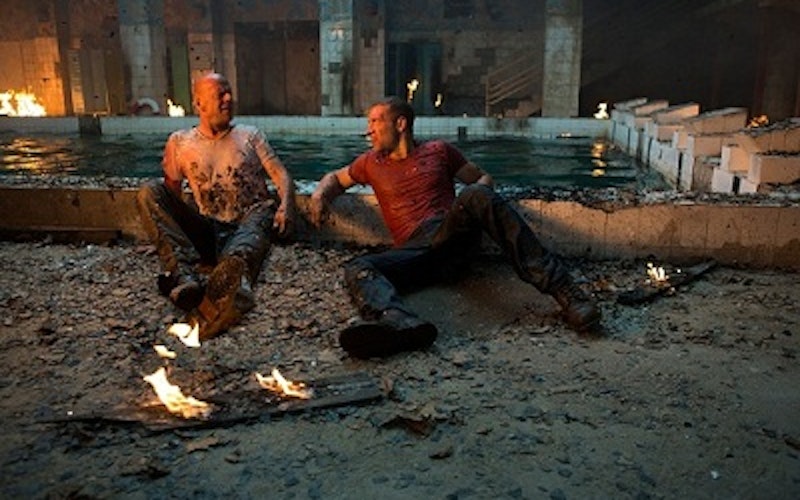
Music
Die Hard and our appetite for destruction
Give A Good Day to Die Hard this (and most critics haven’t been willing to give it much): the fifth installment in the Die Hard franchise has a commitment to chaos that is – ironically - zen-like in its focus. Like all of its predecessors, this is a film that will not be distracted by such things as plot, dialogue or even the laws of physics. It exists purely to unleash massive mayhem on the screen.
I’ll be the first to admit that there’s a goofy sense of exhilaration to this sort of stuff (at least when it’s not being directed by Michael Bay). As John McClane (Bruce Willis) travels to Moscow to help his estranged son (Jai Courtney), who is being held as a political prisoner, the movie rolls out explosions and car crashes and leaps from tall buildings, pushing them far beyond the point of spectacle and into the realm of giddy stupidity. When McClane drives a stolen SUV off a bridge, onto the roof of a truck and across the hoods of a dozen sedans to get to the street below, we watch in disbelieving admiration (and wonder what we might get for our mini-van if we traded it in for the Mercedes he’s driving).
Why is this sort of stuff so much fun? And if you don’t think it is, I’ll put the question another way. Why do we sometimes enjoy knocking down sand castles more than building them? Why do preschoolers spend minutes on end creating a tower out of blocks, all in anticipation of those glorious seconds when they’ll come crashing apart and scatter across the room?
If we most honor God’s image in our creative endeavors, do we do the opposite in our destructive ones?
Surely it’s more ennobling to create than destroy. In The Cross of Christ, John Stott points to “our gifts of aesthetic appreciation and artistic creativity” as ways that we model the image of God. While that’s true, and although enacting on our creative impulses is rewarding, it’s not always enough, is it? Sometimes we light a bonfire just to watch things burn. Sometimes we want to see that military helicopter crash into the abandoned warehouse, McClane dangling from its side.
The latter takes place during the climax of A Good Day to Die Hard, which is set, appropriately, at Chernobyl. When McClane’s son tells him that this is their destination, I laughed out loud. Could there be a better locale for a movie built upon self-inflicted disaster than one of the 20th-century’s most notorious, man-made wastelands?
It was Chernobyl that brought to mind another notable human endeavor that ended in failure: the tower of Babel. In some ways, our disaster movies are like Babel, only inverted. We try to prove we’re god-like not by creating – by showing we can do what He does - but by destroying. By doing the very thing He promised, ever since Noah, that He would not. If we most honor God’s image in our creative endeavors, do we do the opposite in our destructive ones?
That’s the unsettling question that lingers, even as I revel in the ridiculousness of this latest Die Hard. In a sense, such films are acts of extreme hubris and grandiose denial – human impertinence on a catastrophic level. We’re not going to die, our movies of destruction say, and if by some strange chance we do, we’re going to do it hard.
Topics: Movies, Culture At Large, Arts & Leisure